In the early 2000s, I have flown to destinations in eastern Europe quite a bit, including St. Petersburg (Russia), Odessa and Simferopol (Ukraine), Chisinau (Moldova) and the Baltic States (at the time, they were not part of the EU and Schengen).
I have to say I always enjoyed flying to these places. However, at the end of 2003, I was fed up. Fed up trying to obtain overflight permits, fed up with the almost ubiquitous "handling" robberries, and generally fed up with many peoples' strange interpretation of capitalism (i.e. deliver an abysmal service and charge horrendous amouts of money for that).
So, with the exception of a very special and memorable trip all the way to Azerbaijan in 2011, I never returned to the "wild east". Instead, I thoroughly enjoyed flying in the more central parts of Europe, in particular Italy and the British Isles.
However, a couple of eastern european destinations always remained on my bucket list. Tbilisi (Georgia) was crossed off during that 2011 trip. What a great city in a beautiful country!
And another one was Lviv (german: Lemberg) in western Ukraine.
Last week, I had four days off and wanted to take N4ZY out for that one last trip of the year. Weatherwise, the situation looked much like this:
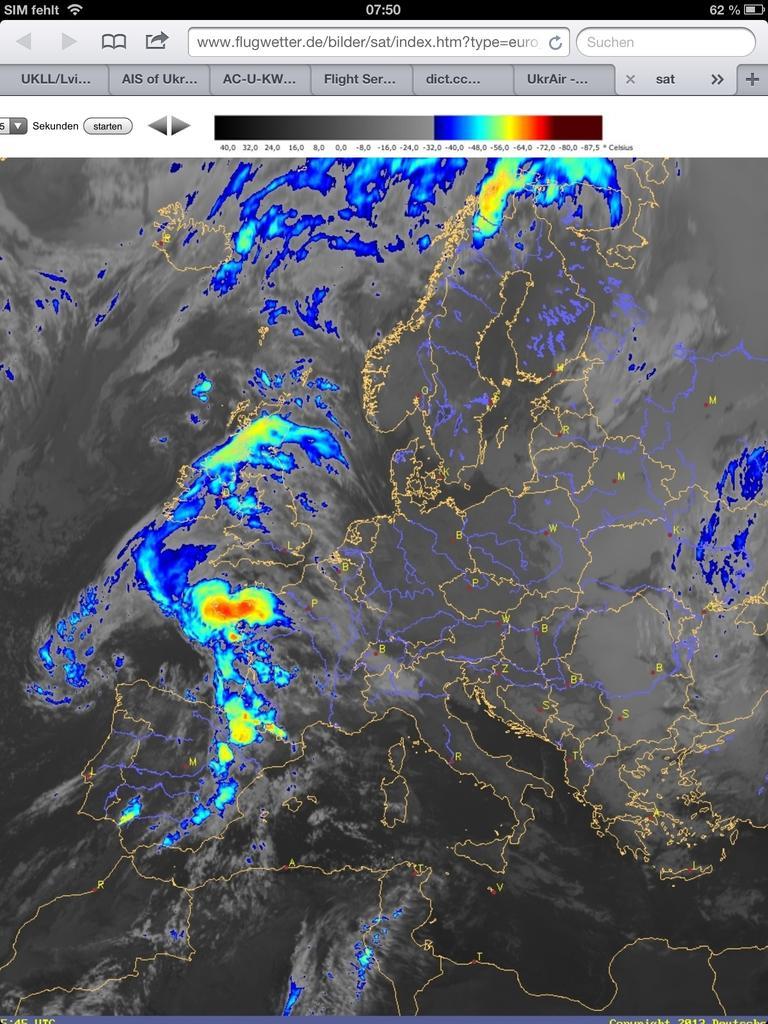
A huge high pressure area was sitting over eastern Europe, whereas several fronts were crossing the more western parts. According to the forecasts, the situation was bound to stay much like that over the next few days. Abiding by my golden rule "always fly where the good weather is", southern France and Italy were ruled out. And then there was this high pressure area in the east, as if it was saying "come on over".
I quickly checked the ukrainian AIP, applied for the required overflight permit and made a general plan. It's actually not that far from Luebeck to Lviv; the direct flight would only take 3.5 hours in the SR22. However, we decided for an intermediate overnight stop enroute. The first day's flight would be a rather short one to Wroclaw (EPWR) in southwestern Poland and the next day, we would fly on to Lviv (UKLL). Two days later, we would fly back to Luebeck, with a stop in Poznan (EPPO) for some much needed fuel (there is essentially no 100LL in Ukraine).
So here is my trip report...
Interestingly, the evening before departure, Rocketroute was not able to come up with any routing from EDHL to EPWR. Simpy none. What now? Well, this is where Rocketroute's 24/7 telephone hotline comes in handy. So, just before midnight, I called and received excellent help from a very friendly bloke from the RR team. It turned out that indeed Poland had basically "shut down" parts of their lower airway system, simply by applying too many restrictions at the same time. However, the RR staff disposes of a few "tools" that the normal user don't have, and eventually, he managed to validate an acceptable routing:
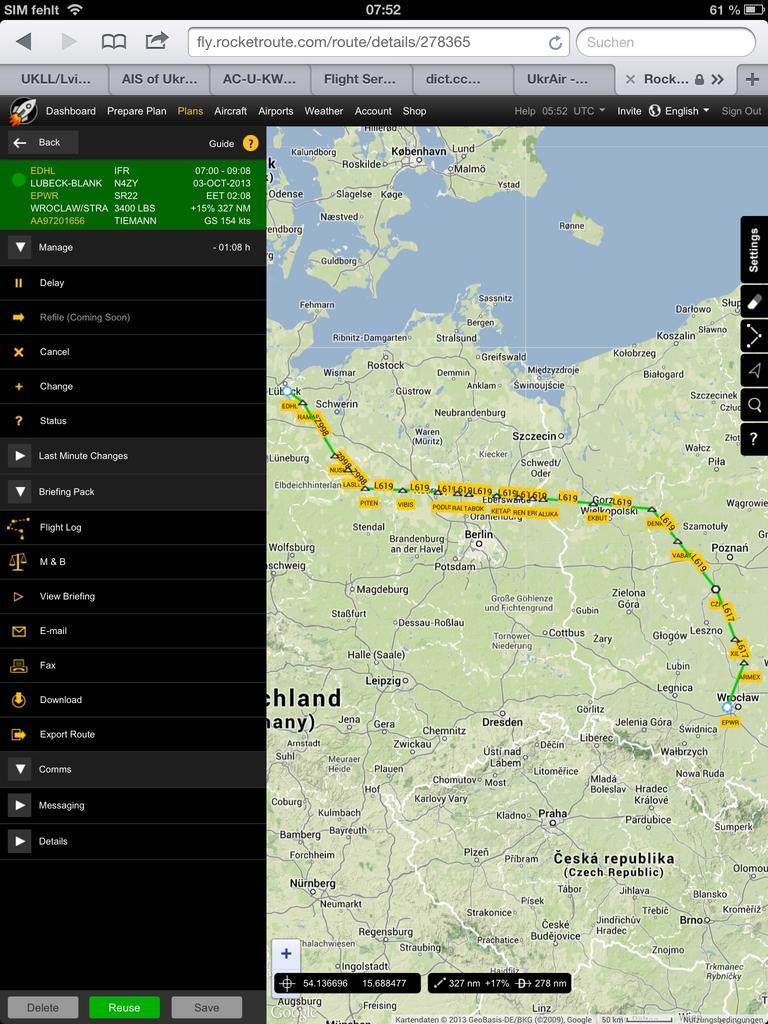
Far from ideal of course, but I didn't worry much.
The next morning, the weather was cold and clear at Luebeck airport.
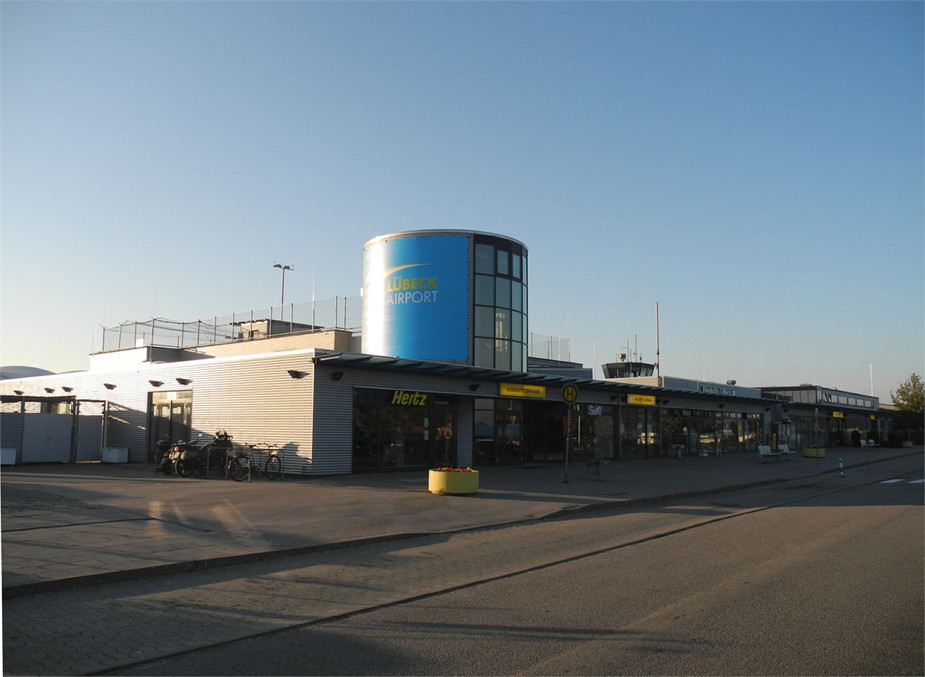
There are no real good airborne photos of this flight...we were flying early in the morning, into an east-southeasterly direction. Add to this the high pressure conditions and the fact that we are talking early october and you'll see that this is not a good recipe for good photos. Here is what the views ahead were like:
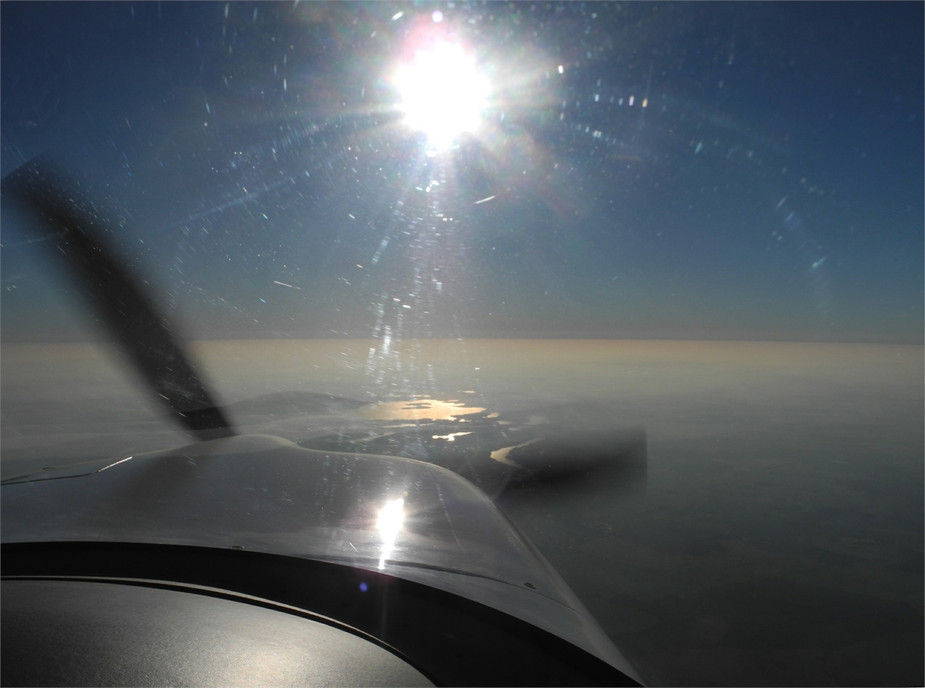
The river Oder meandering towards the southwest of Poland:

We eventually started our descent for the RNAV approach for runway 10 at EPWR. This is on short final and you can see the shiny new airline terminal.
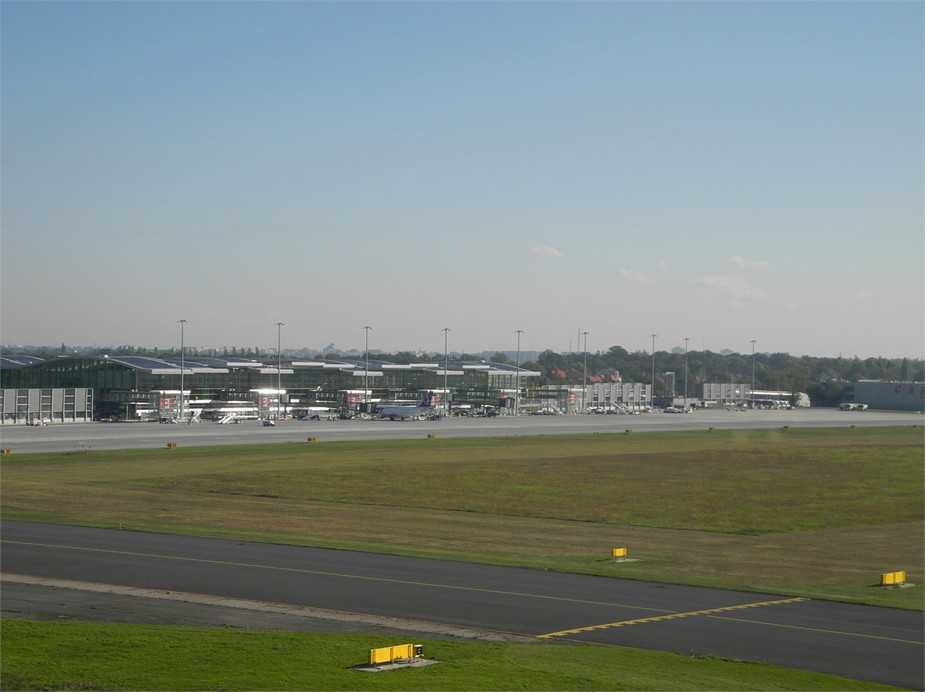
GA is handled on the apron near the old airline terminal, which is now only used for GA.
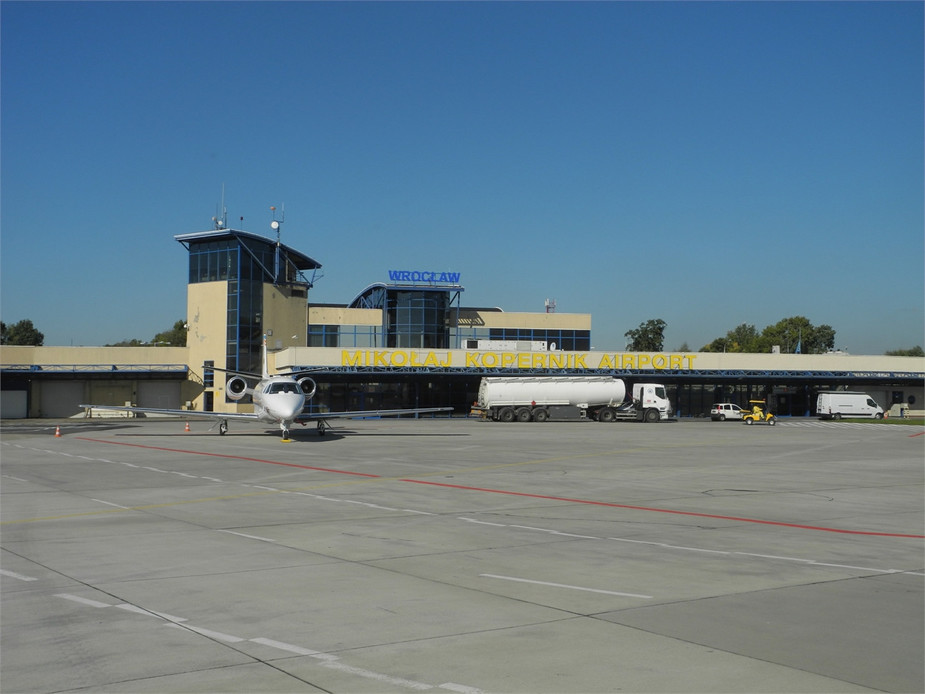
There was a handful of other GA aircraft parked, another Cirrus, a Seneca, two Mooneys and a DA40. BTW, the fees (including a totally useless handling service) came up to 90 Euros. Just about acceptable for a one-off visit, but definitely not cheap.
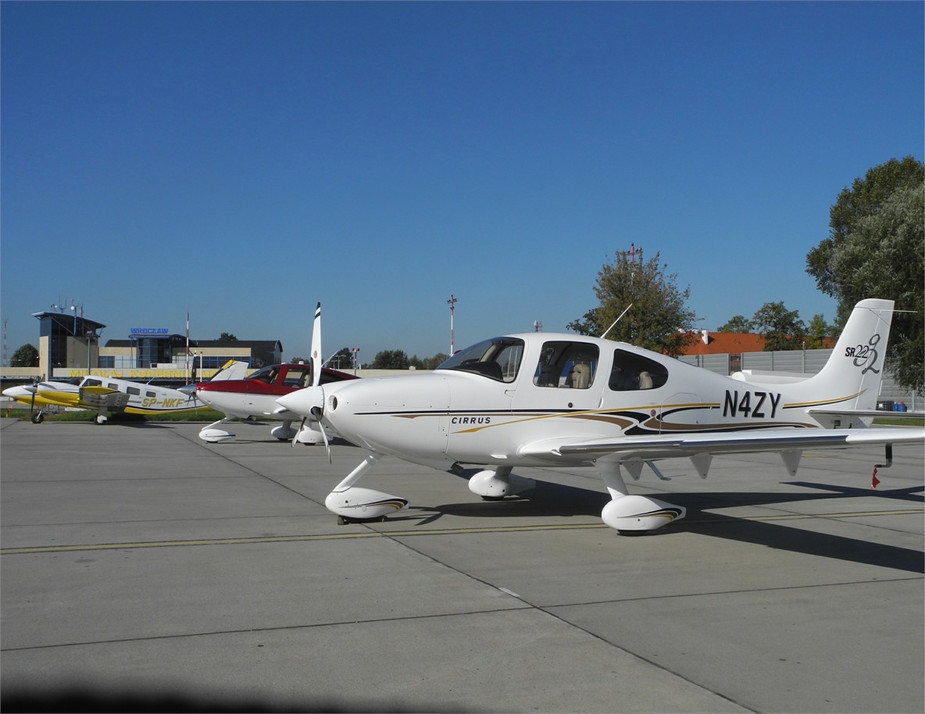
Wroclaw, the capital of Lower Silesia, has a beaufiful city centre and loads of old churches.
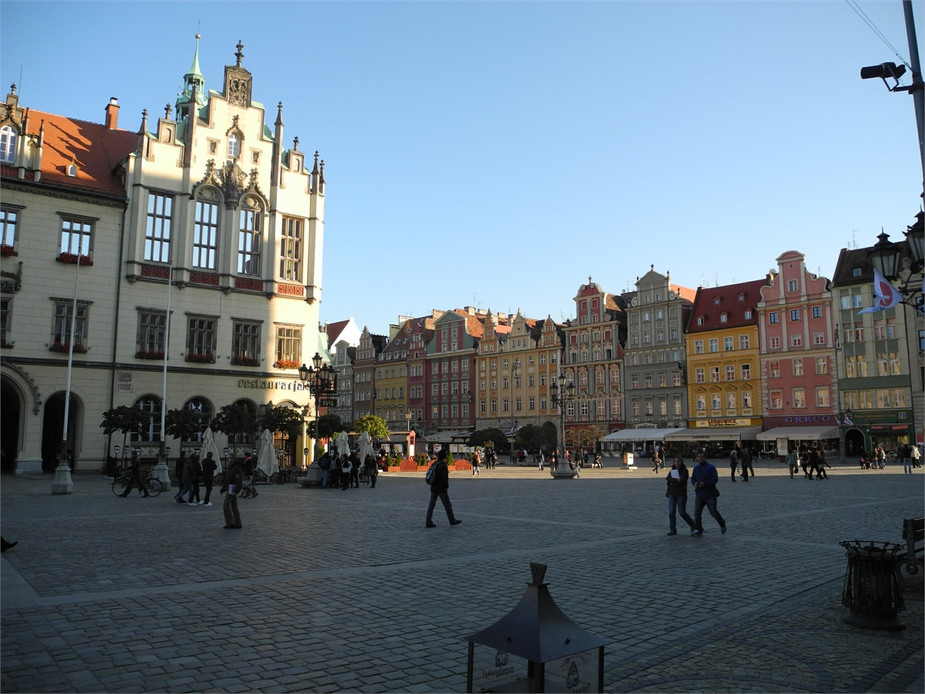
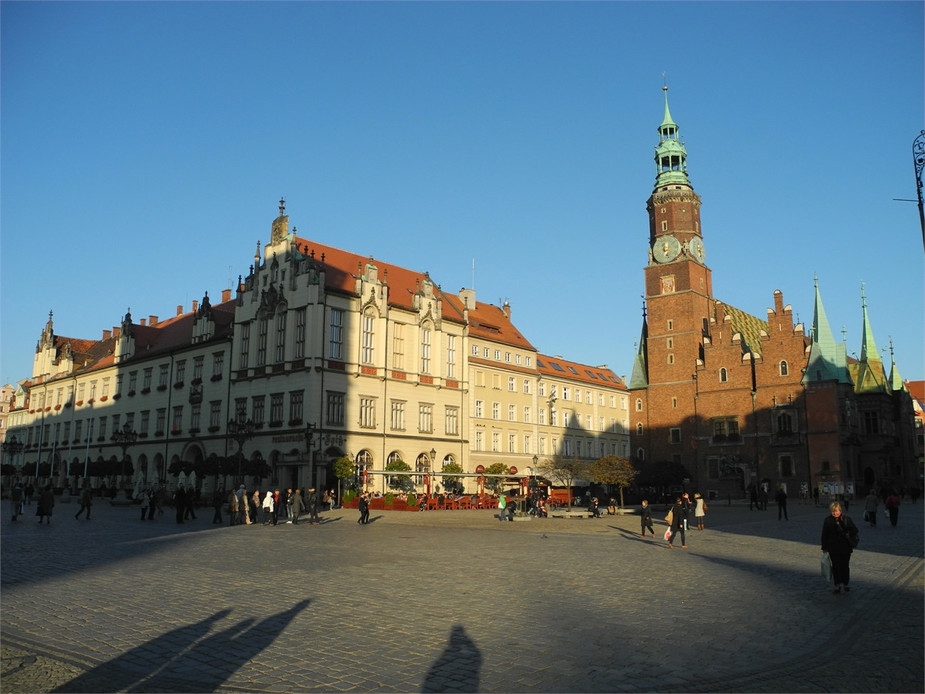
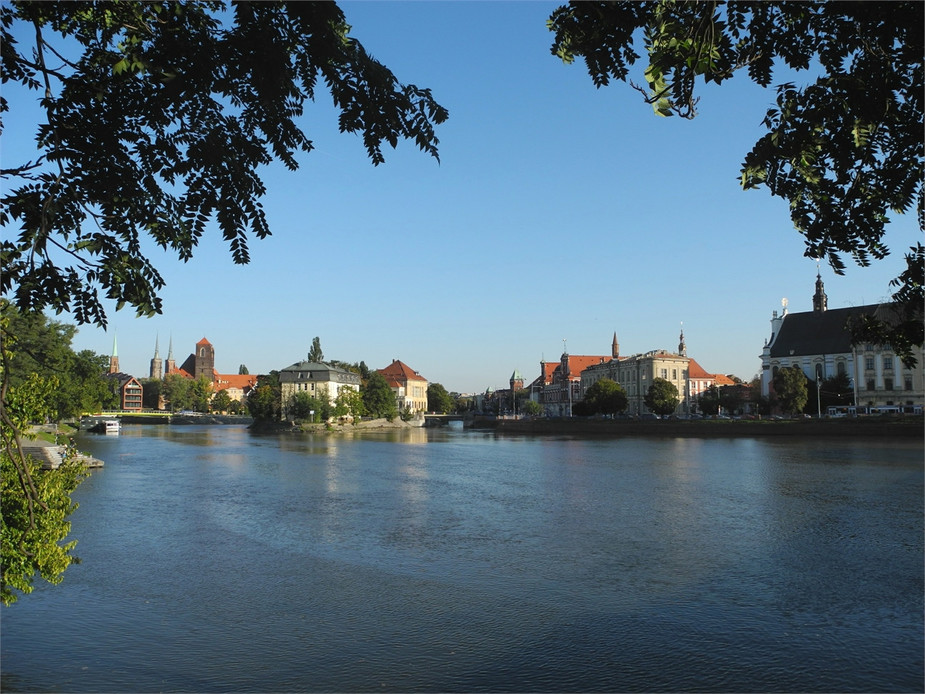
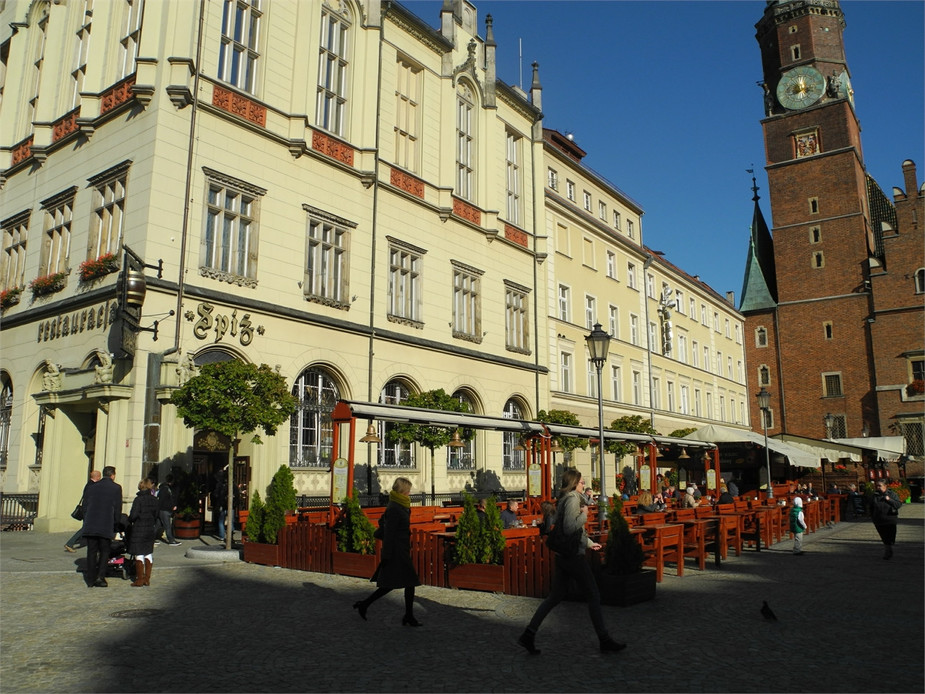
A nice atmosphere and some good food at the "Schweidnitzer Keller", beneath the old city hall.
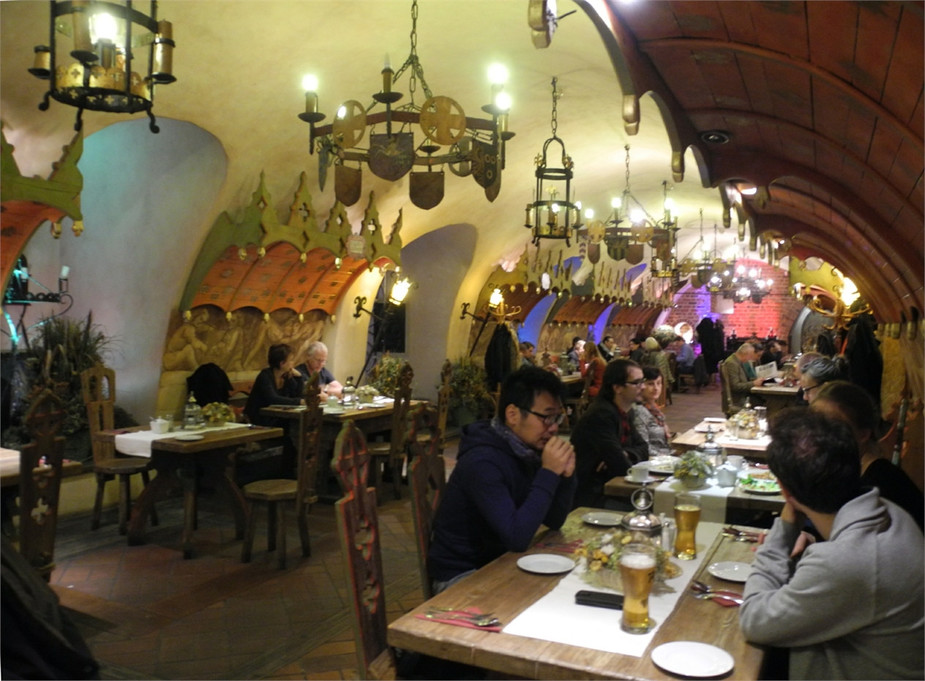
My father and our, ahem... flight engineer, Peter (no, 'nother Peter)
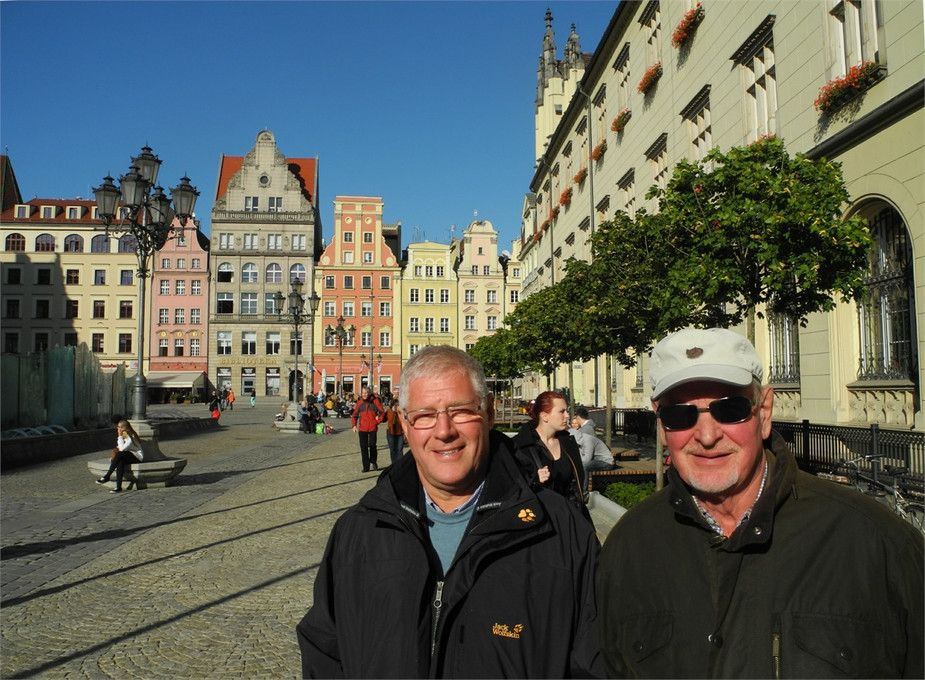
The next morning was quite cold in Wroclaw. Due to the clear night, there was a bit of frost on the aircaft's wings (can't be seen here) but we managed to remove it without much of an effort.
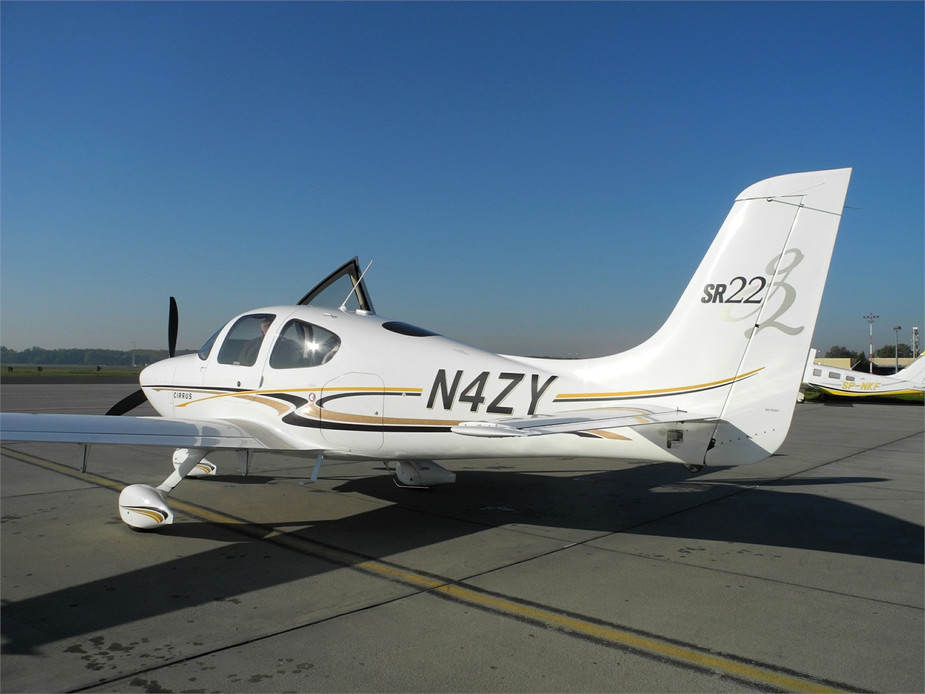
Welcome to the flight deck! If you look at the PFD, you can that the terrain data stops somewhere east of Krakow.
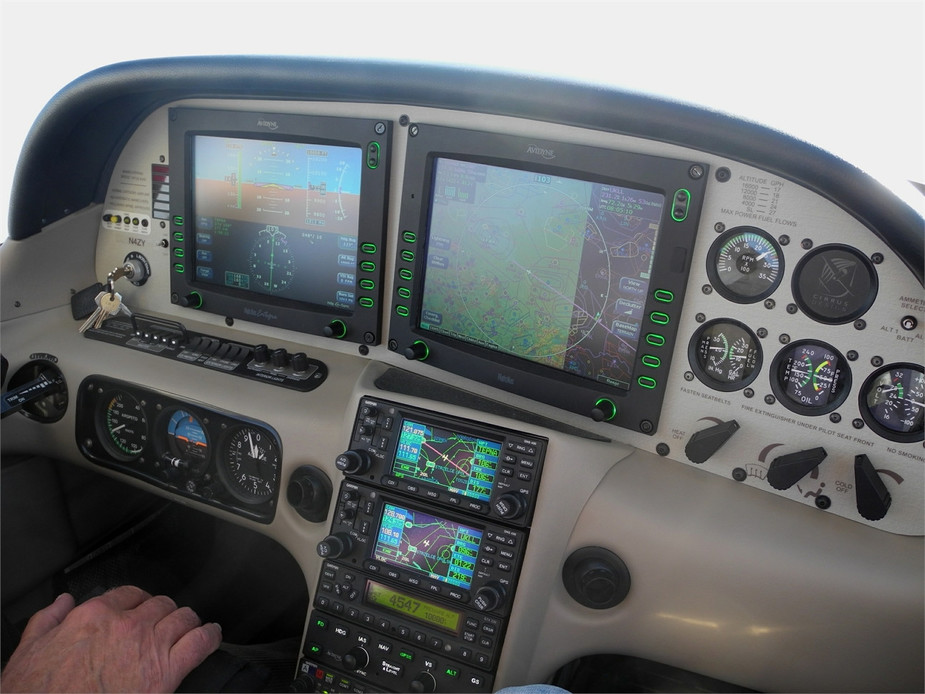
To our right, in the distance, we could see the mountains of the High Tatras.
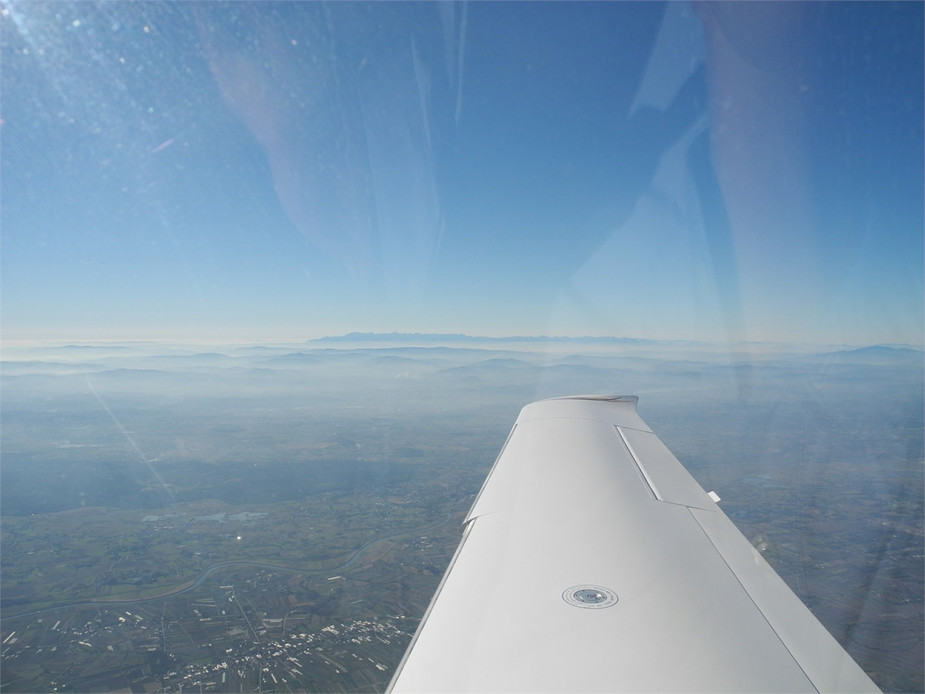
TEPNA was our crossing point into the Ukraine FIR. From there, it is just about another 50 miles to Lviv. BTW, don't worry about our CHTs...we currently have a bad probe on cylinder no. 1 (problems with these probes are very common on the Cirrus, unfortunately).
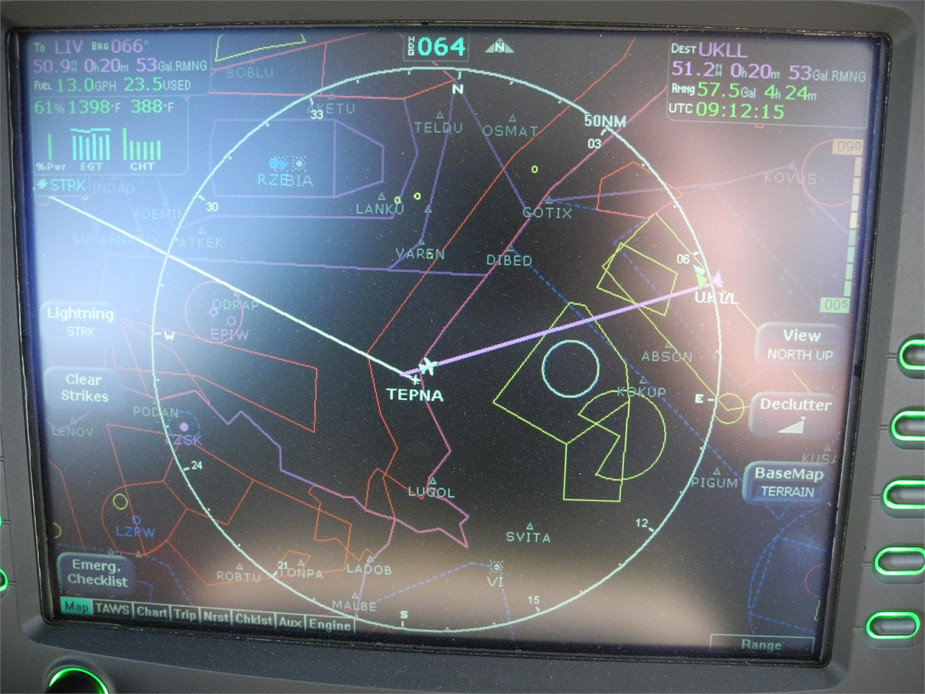
The landscape in the southwest of Ukraine (Galicia) is not the typical ukrainian landscape...lots of lakes, woods and smallish fileds.
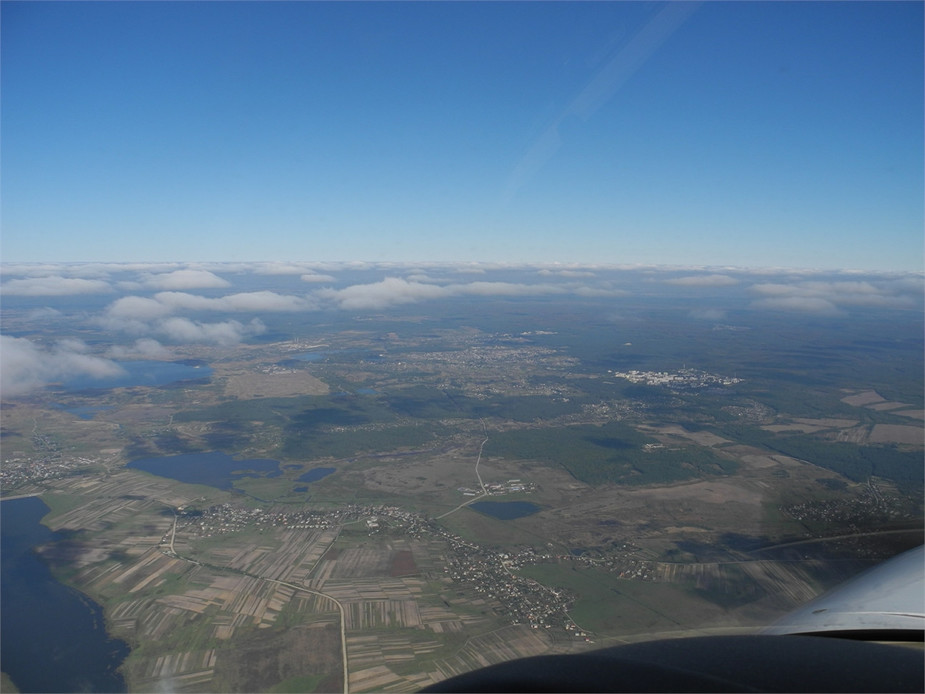
By the way, ATC in Ukraine was great. They spoke very good English, the audio was cristal clear (unlike in Russia) and the vectoring was good. They even make their altitude assignments in feet, nowadays, whereas the AIP approach plates still use metres for altitudes and kilometres for distances. What was interesting was that the platform height (i.e. where the glideslope is intercepted) was only about 1400 feet AGL. Consequently, the GS was intercepted at only about 4 miles from touchdown.
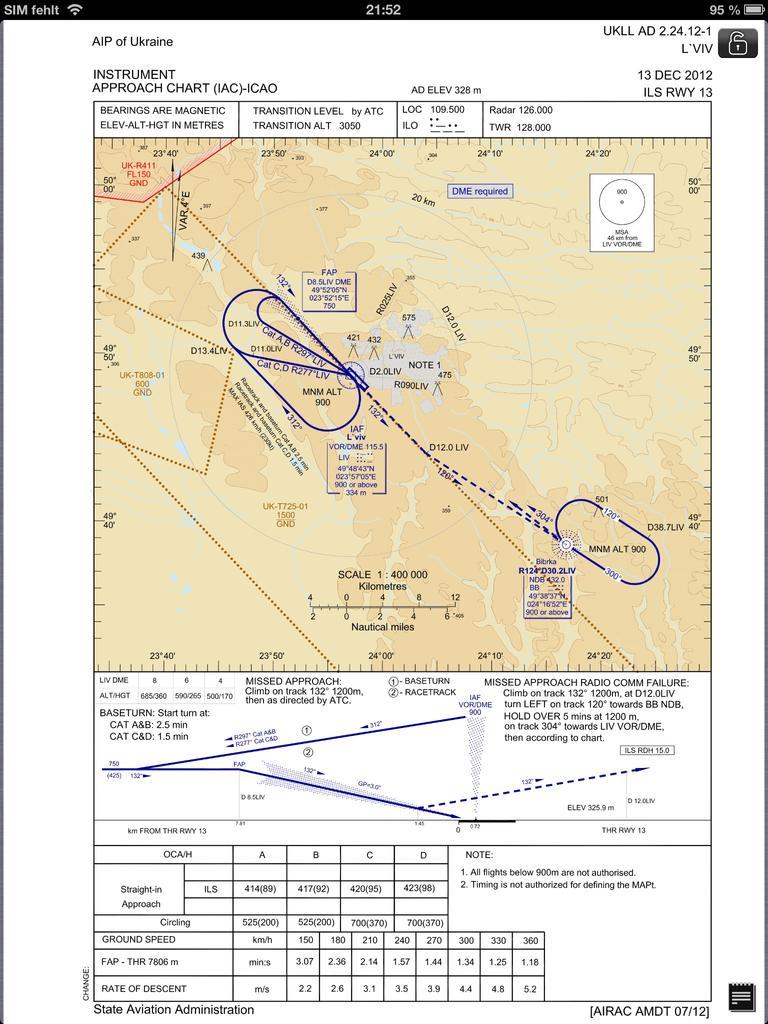
So, after any easy ILS in perfect weather, here we are on short final for runway 13 at UKLL.
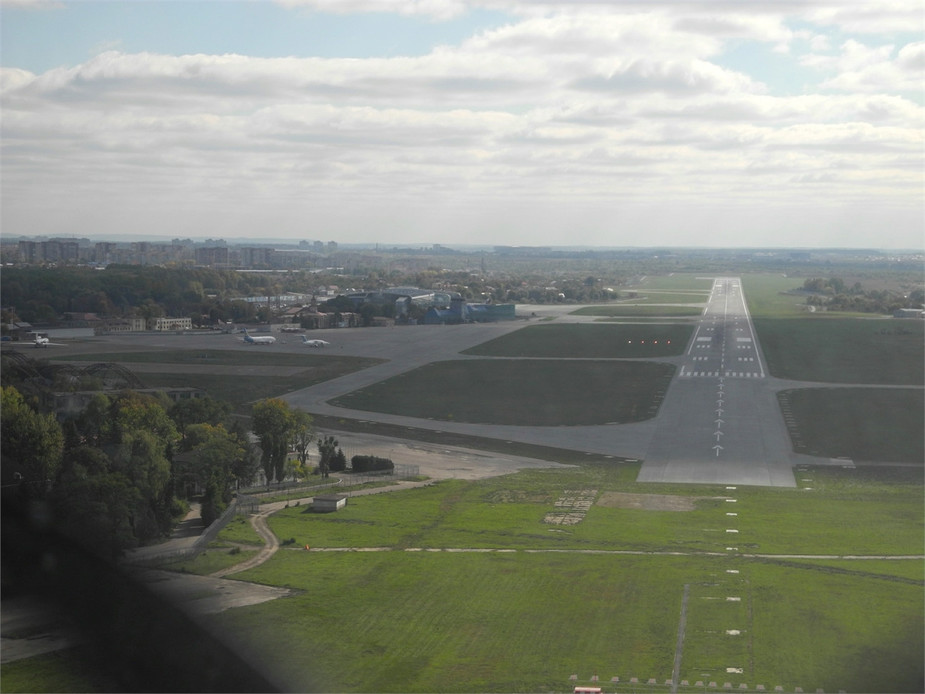
The massive, shiny new airline terminal at UKLL:
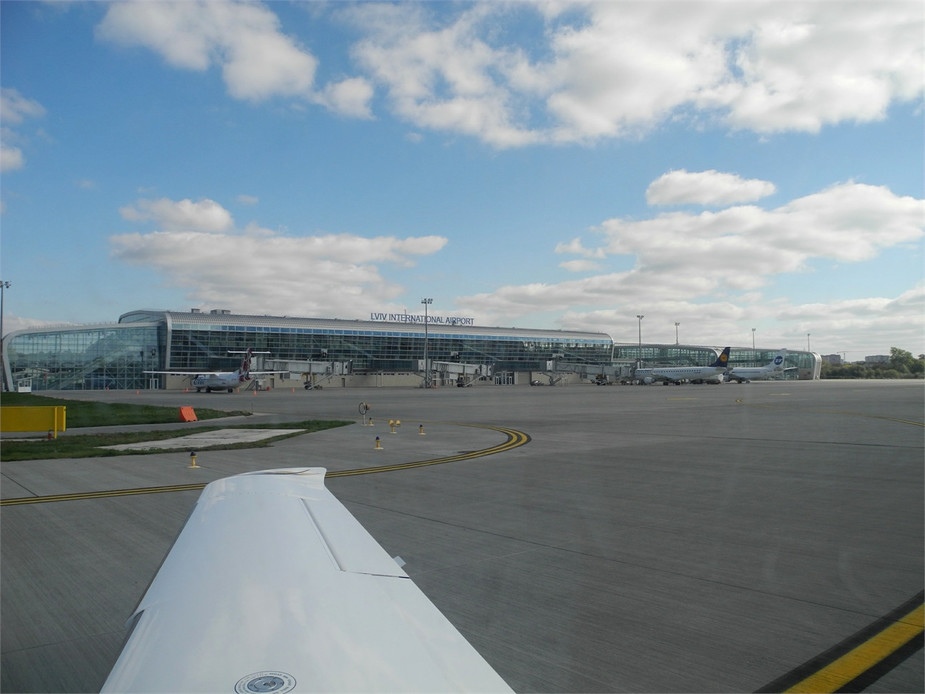
And this is the beautiful, old terminal building. Unfortunately, it doesn't seem to be in use today, not even for GA.
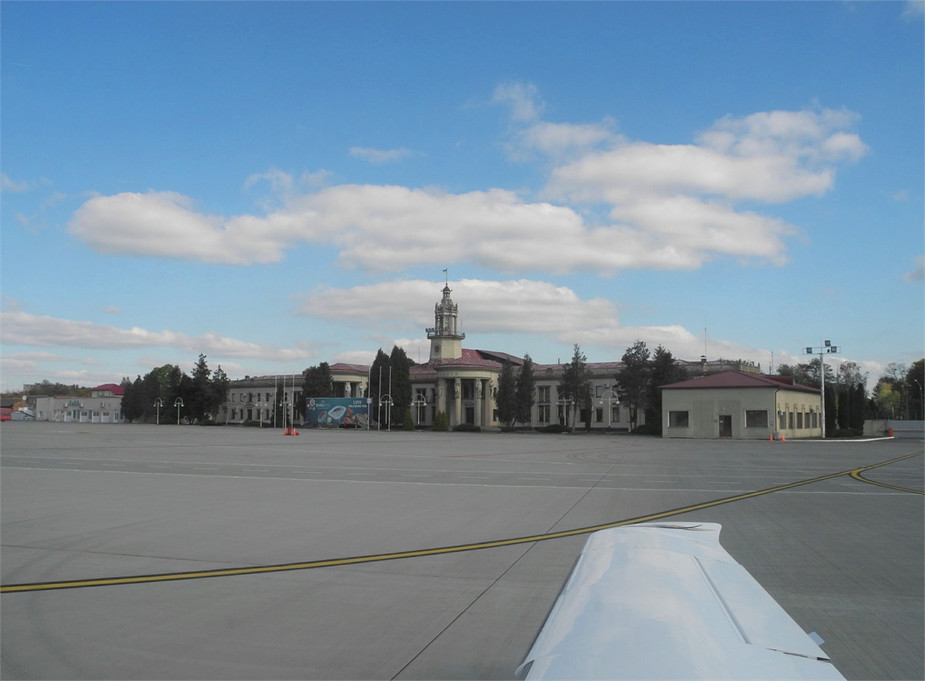
Handling was very quick and efficient (for a country like Ukraine anyway), so we quickly found ourselves in the new, impressive terminal.
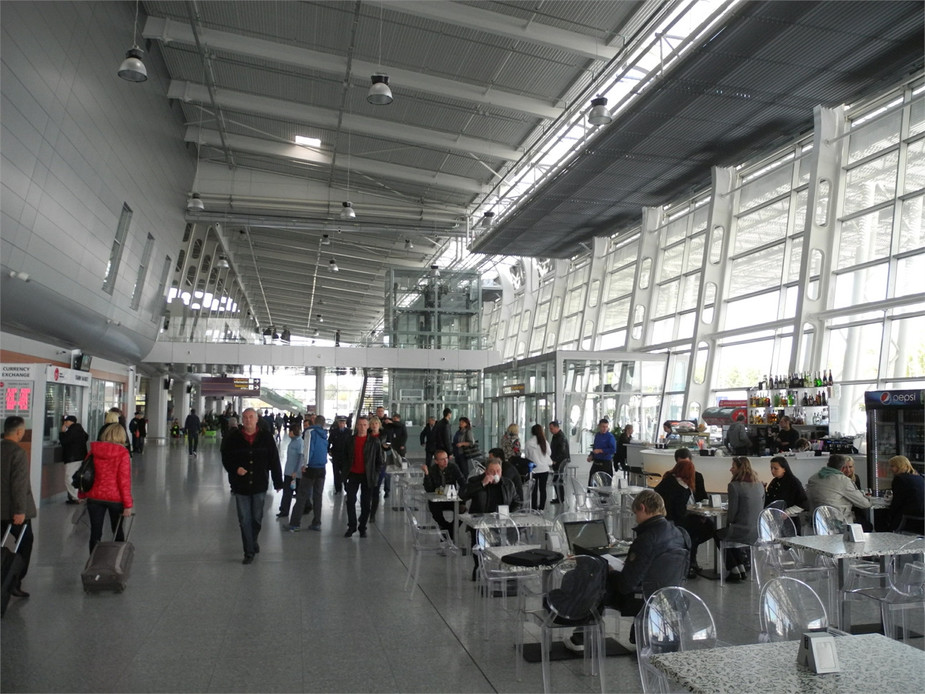
Now for the city of Lviv. Let me share a bit of background, and then a few photos. Today, Lviv is the most important city of western Ukraine. In the times of the Habsburg Monarchy, it was the capital of the "Kingdom of Galicia and Lodomeria". The austro-hungarian Empire gave Lviv its architectural face of today, as the Nazi and Soviet occupations left it largely unscathed. The city has a big, very old University, loads of very beautiful churches and possibly the most outstanding cemetery in Europe. Oh,... and then then there are the girls...;-)
The statute of Taras Shevchenko, and the Jesuit Church.
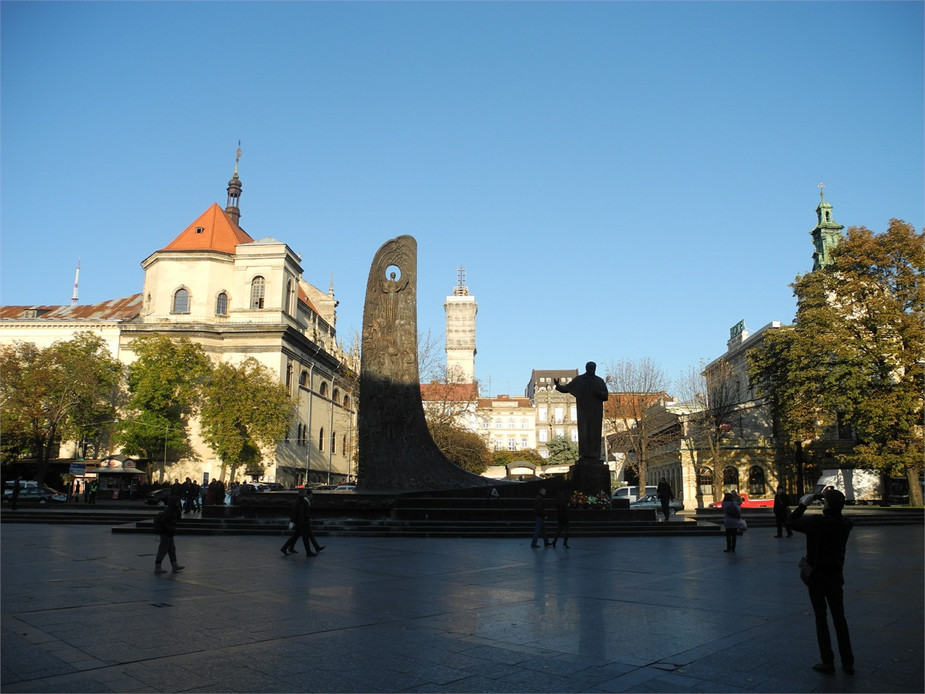
The City Hall, the Market Square and more churches.

Me and my father, enjoying the afternoon sun on Market Square.
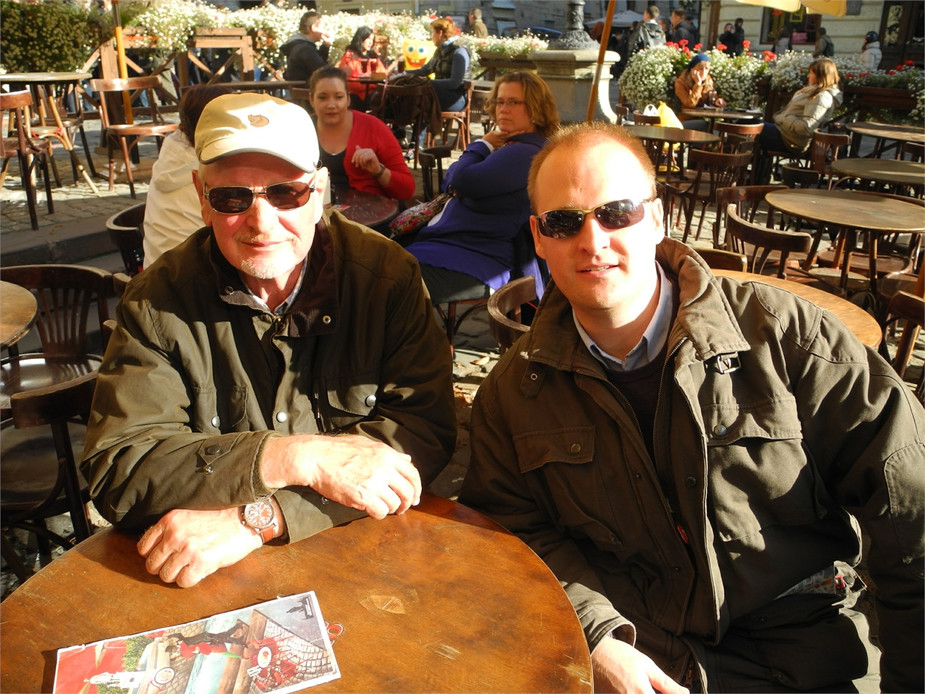
Lviv University.
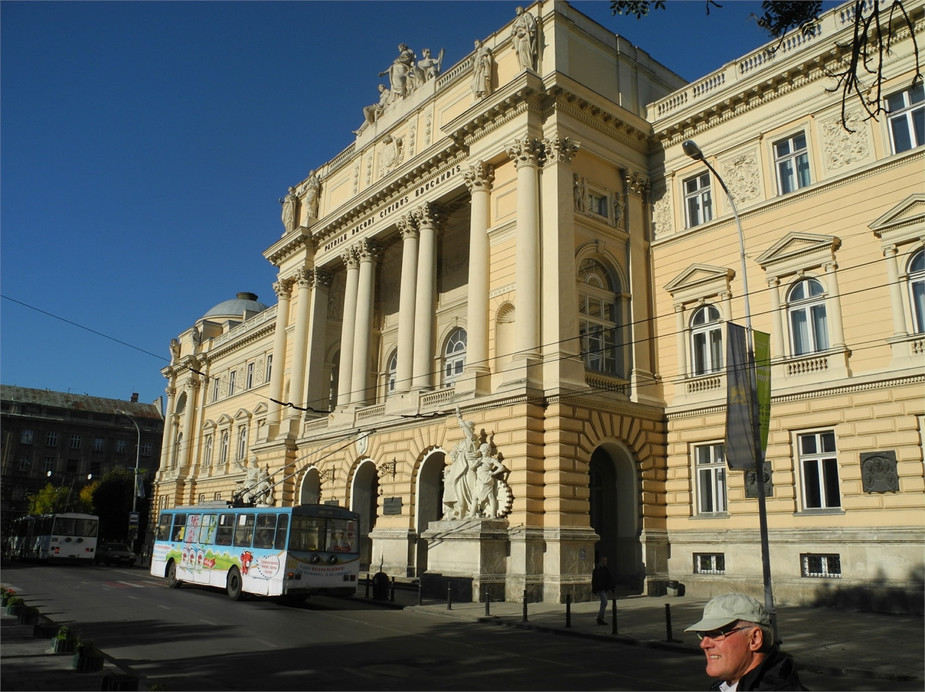
The Opera House.
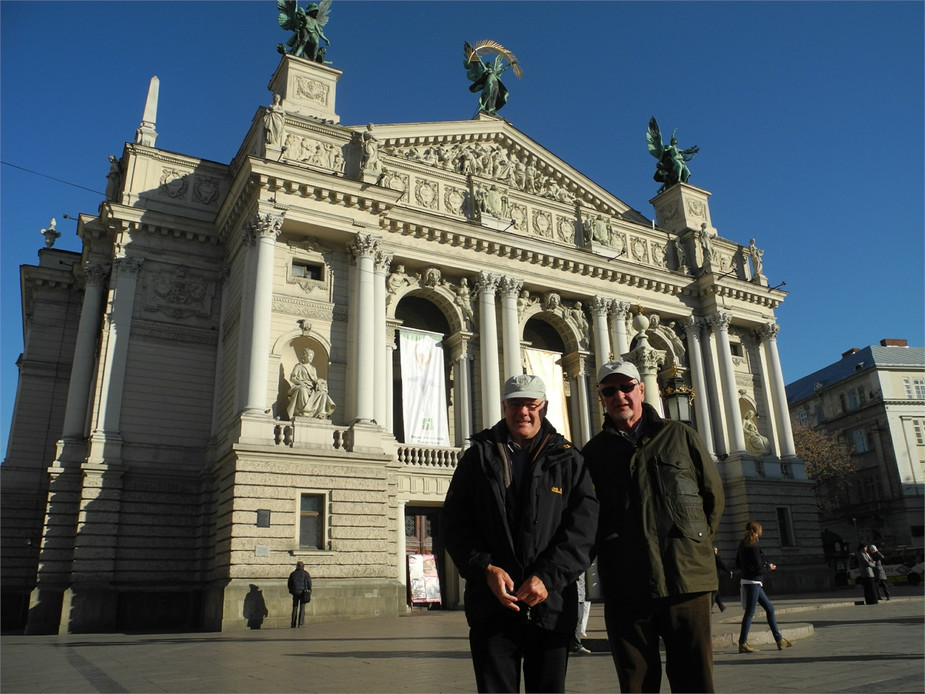
Rofftop view of the city centre.
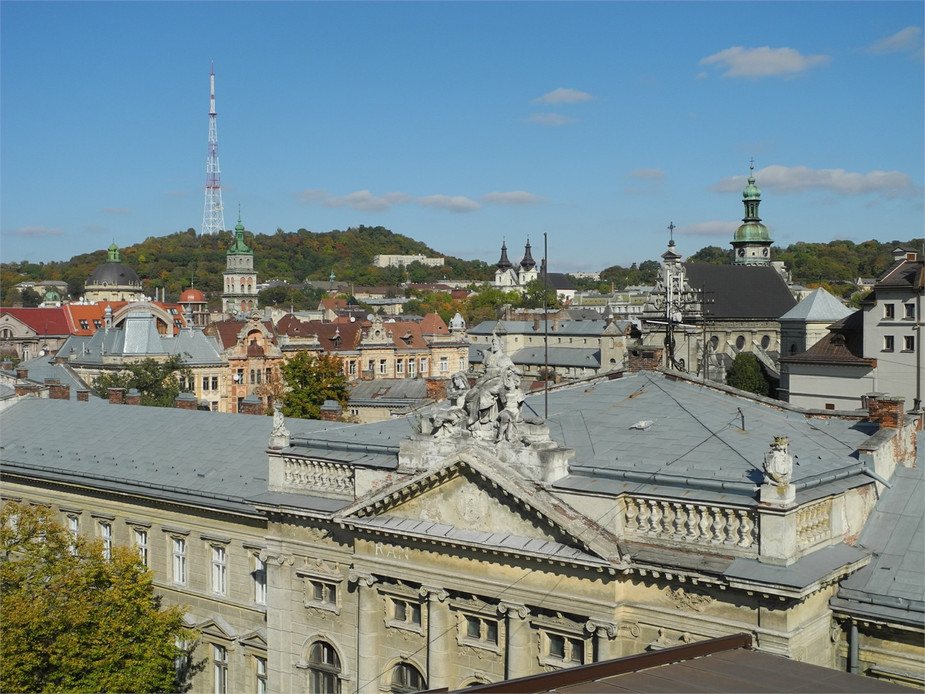
Lychakiv cemetery.
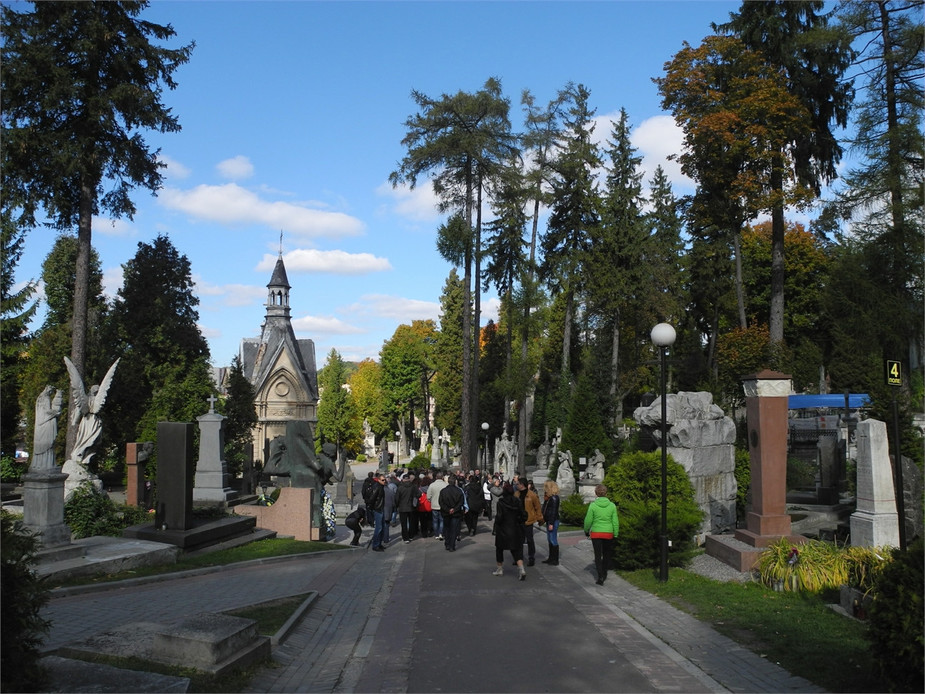
This is the Grand Hotel Lviv, which I can recommend. Ideal location, and not very expensive.
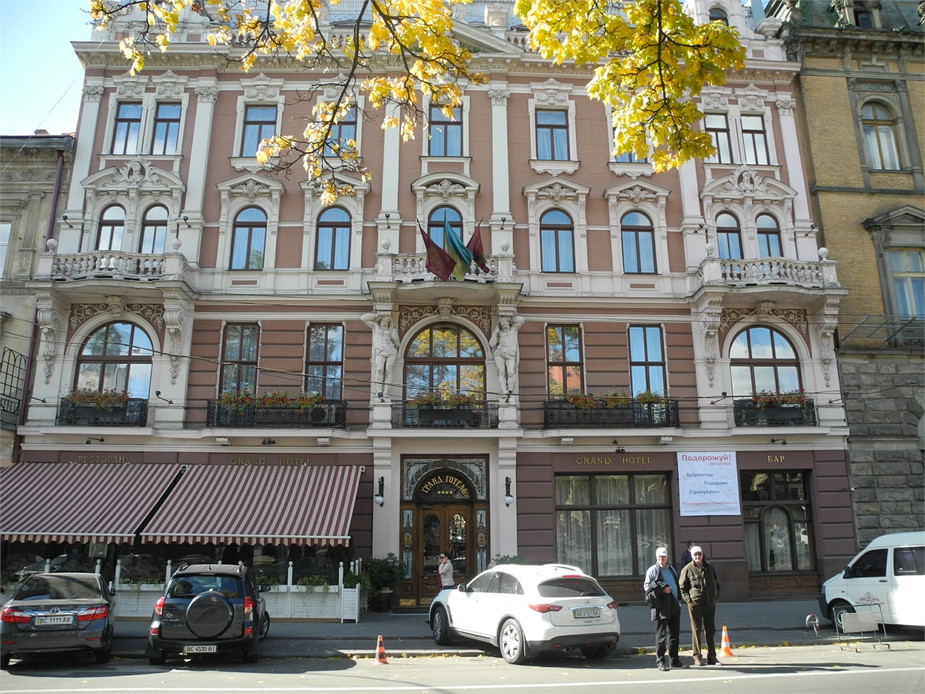
Here's a few more random photos that show the city's beauty, largely owed to its austro-hungarian past. Lviv is sometimes referred to as the "Little Paris of the East". In any case, it clearly has a more "european" touch to it than the cities in the east of the country.
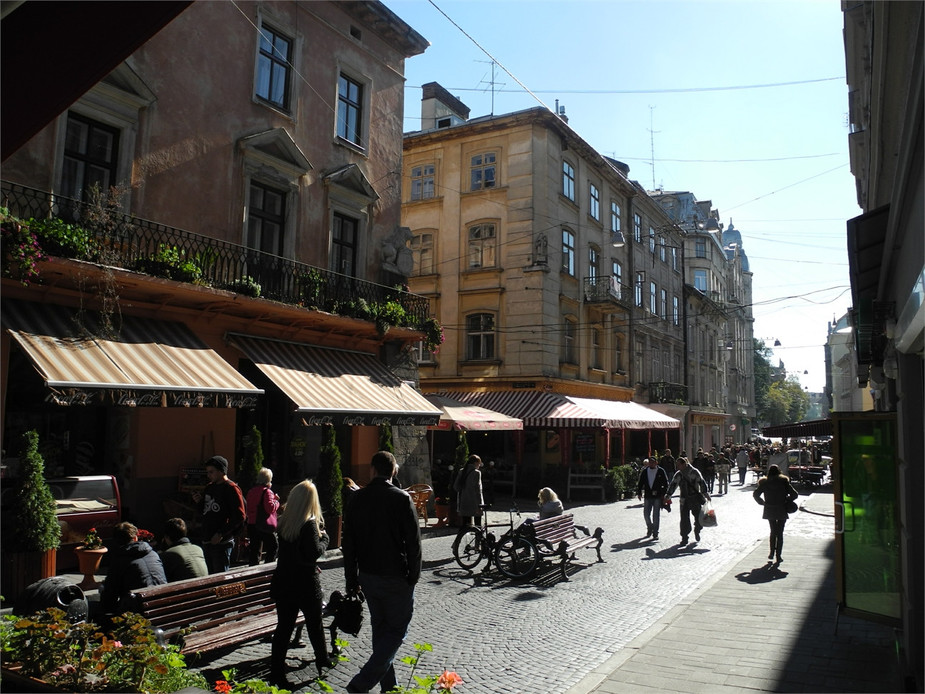
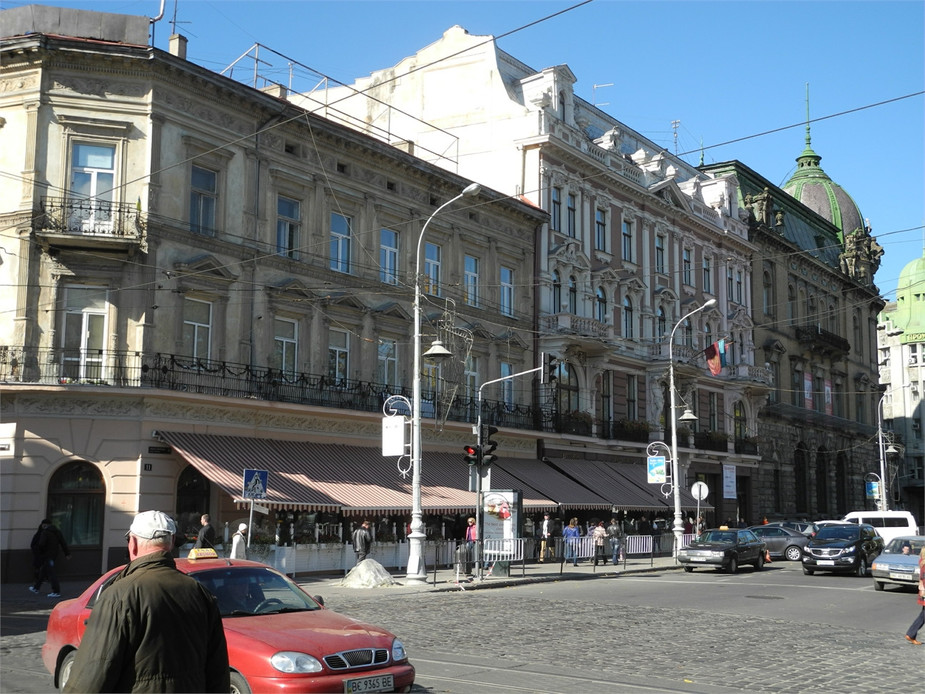

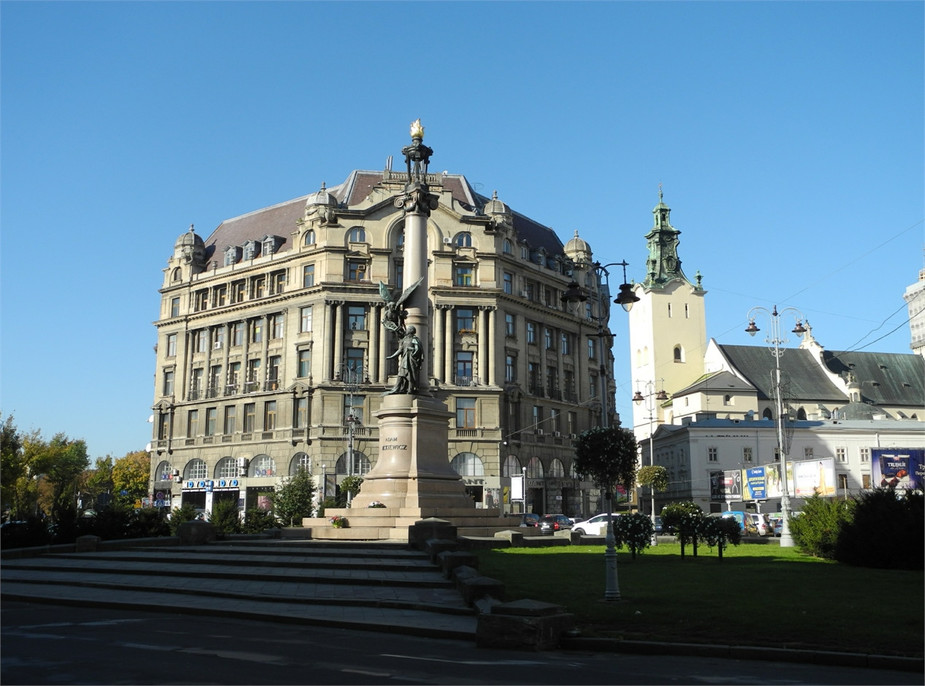
After two days, it was time to head home. This is a quick shot of the streetside front of the old Terminal, which I took out of the driving taxi.
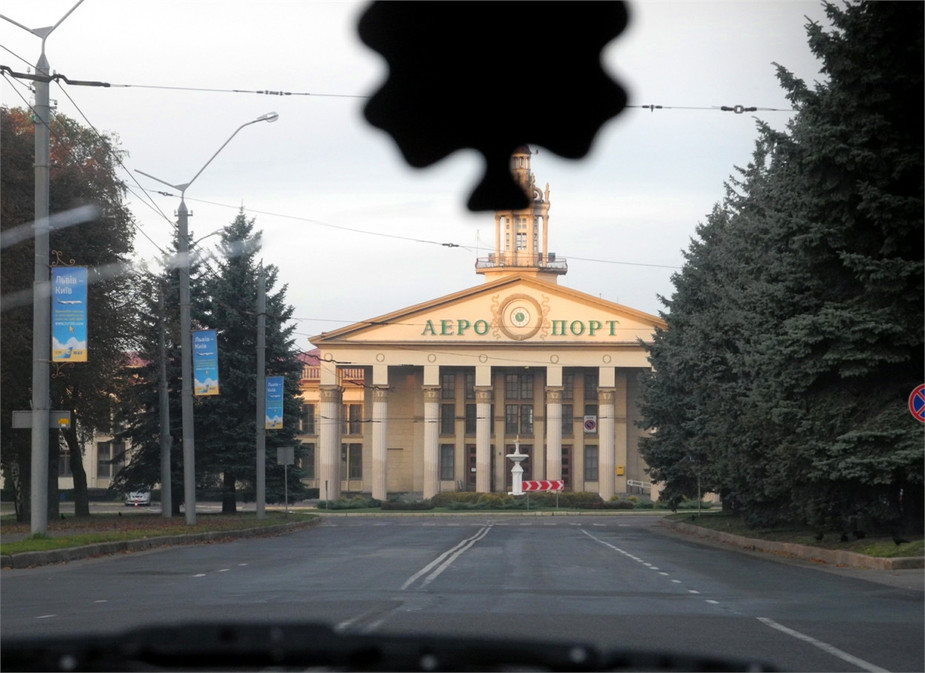
The new terminal, on a sunday, at eight o'clock in the morning.

Paying our fees, going through passport control and getting to the aircraft went reasonably quick. The fees are not too bad for ukrainian standards...all in, we paid 225 Euros.
This time, there was more frost on the aircraft. Luckily, we had en extra jug of TKS fluid in our baggage compartment, so that helped a lot. With a mere 15 minutes delay, we were airborne. This is the new terminal, once again.
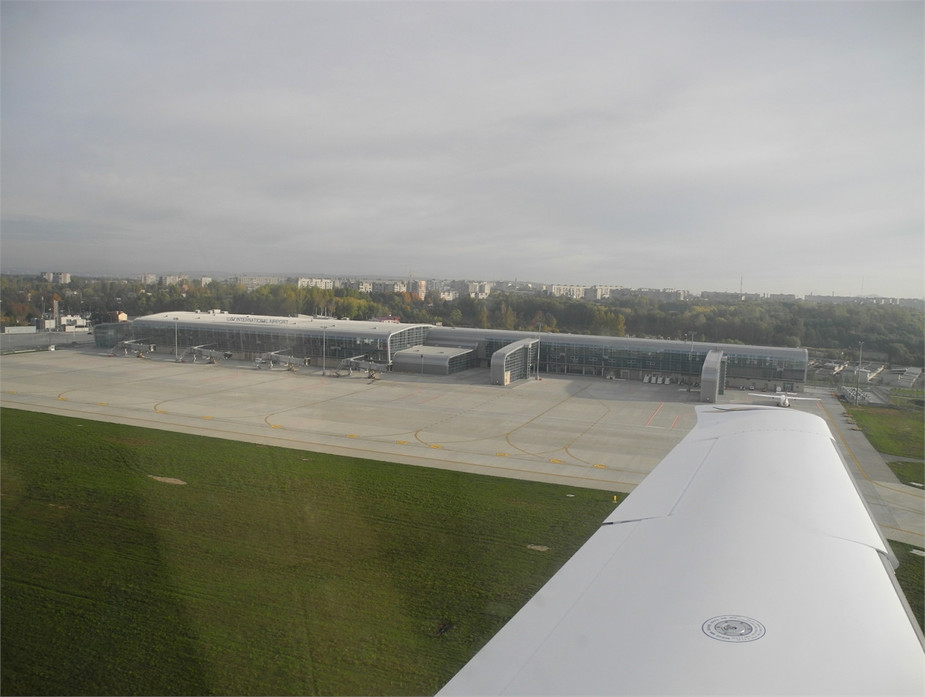
The purposely-built football arena for the Euro 2012.
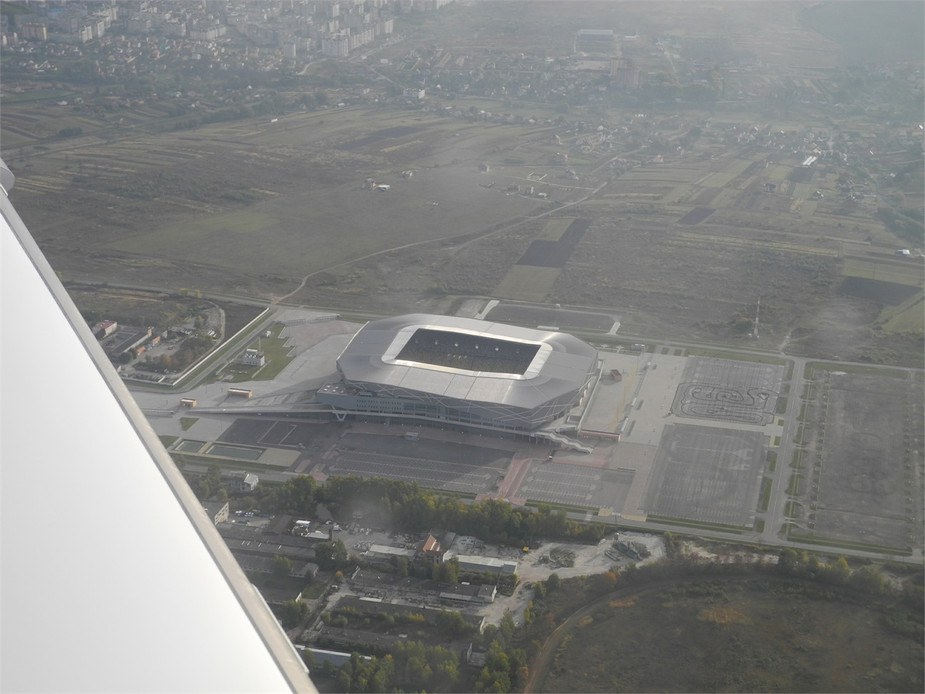
The airport and the city, in one view.
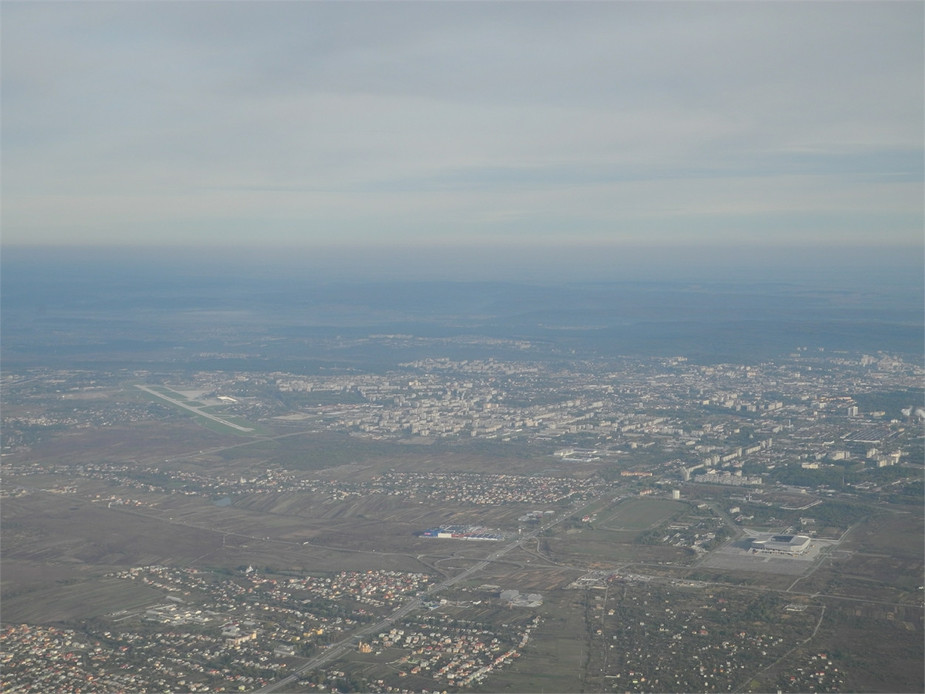
Back in the southeast of Poland, near Rheszow...
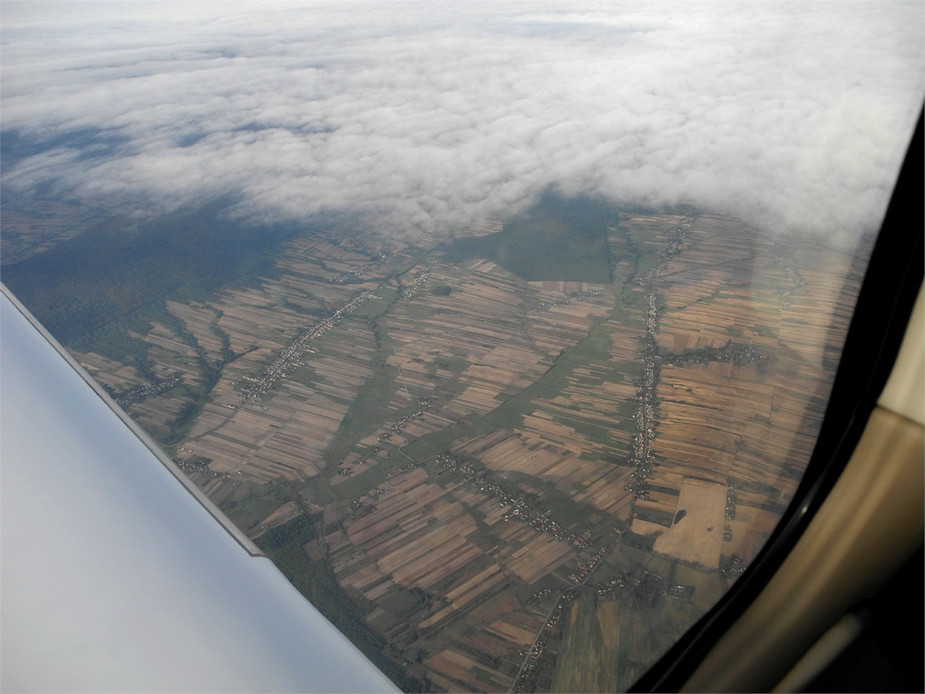
...we now went on top of a stratus cloud layer.
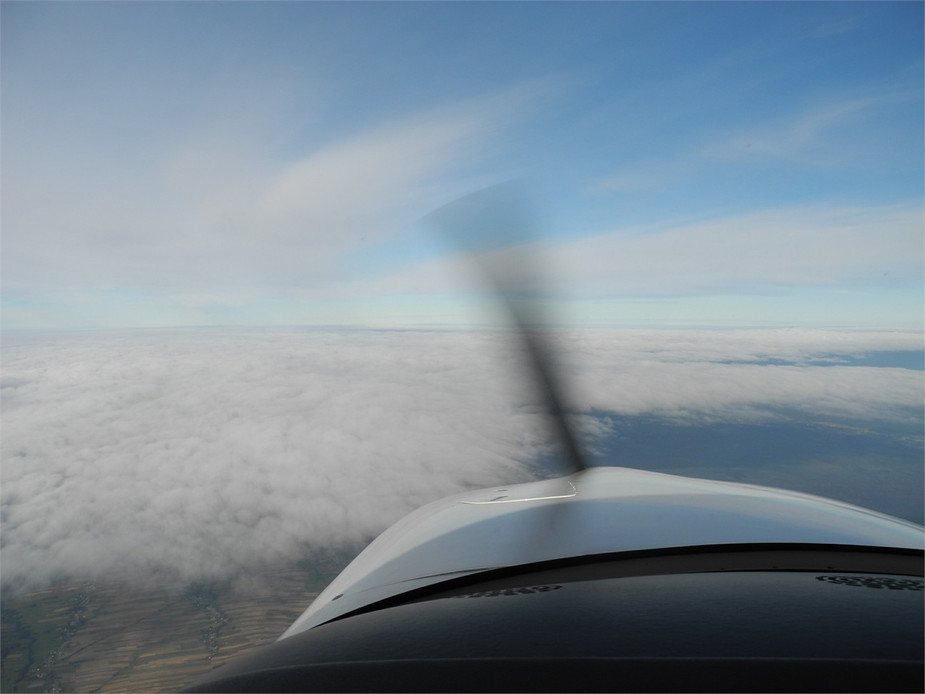
On the ILS for runway 28 at Poznan airport (EPPO).
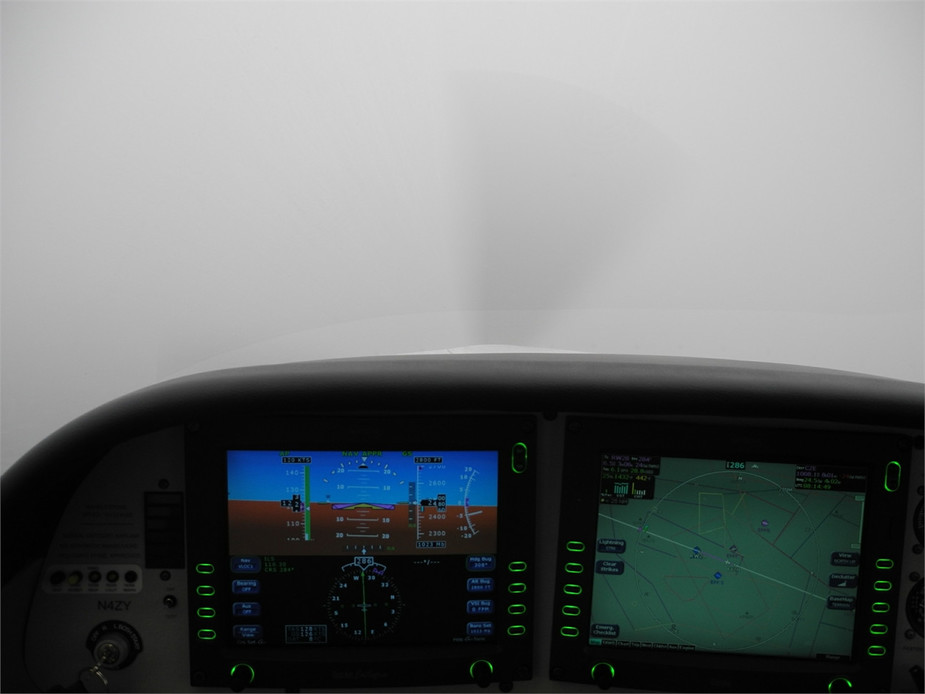
The final approach passes exactly overhead the old city centre of Poznan, so once we broke out at about 1500 feet, we got a view of that, as well.
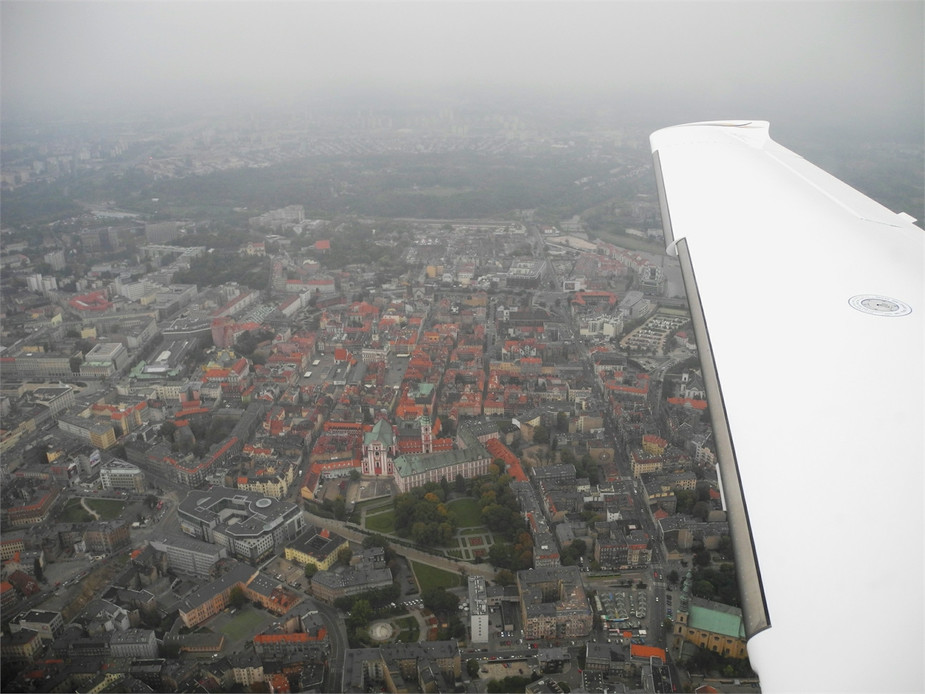
The GA terminal at Poznan. This building hosts the company "Aero Poznan" which has a full motion simulator for the SR22 :-)
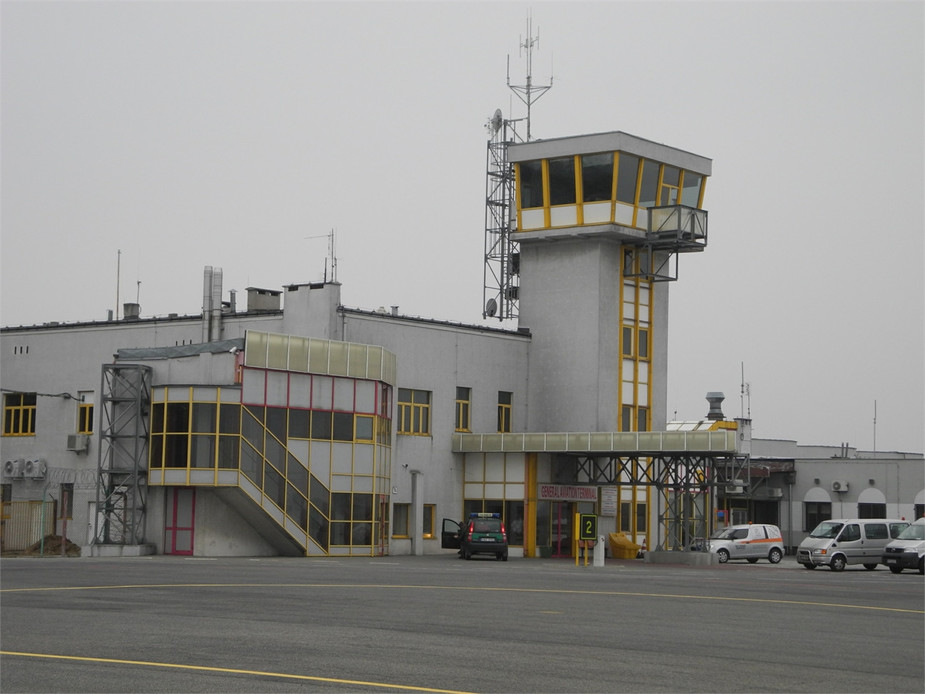
Only 40 minutes after landing we had refuelled at the aircraft, passed customs/immigration, paid the landing fee and even had a short chat with the people from Aero Poznan. So off we went again. After passing abeam Szczecin, the weather improved and we really enjoyed our flight home. This is Lake Mueritz, in the northeast of Germany.
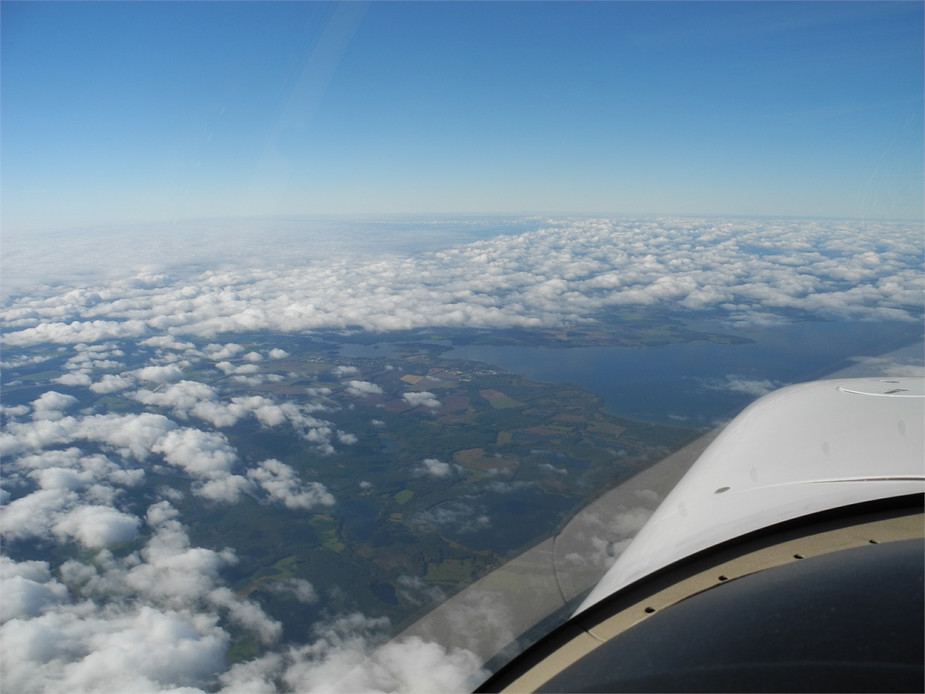
Rechlin-Laerz Airport (EDAX).
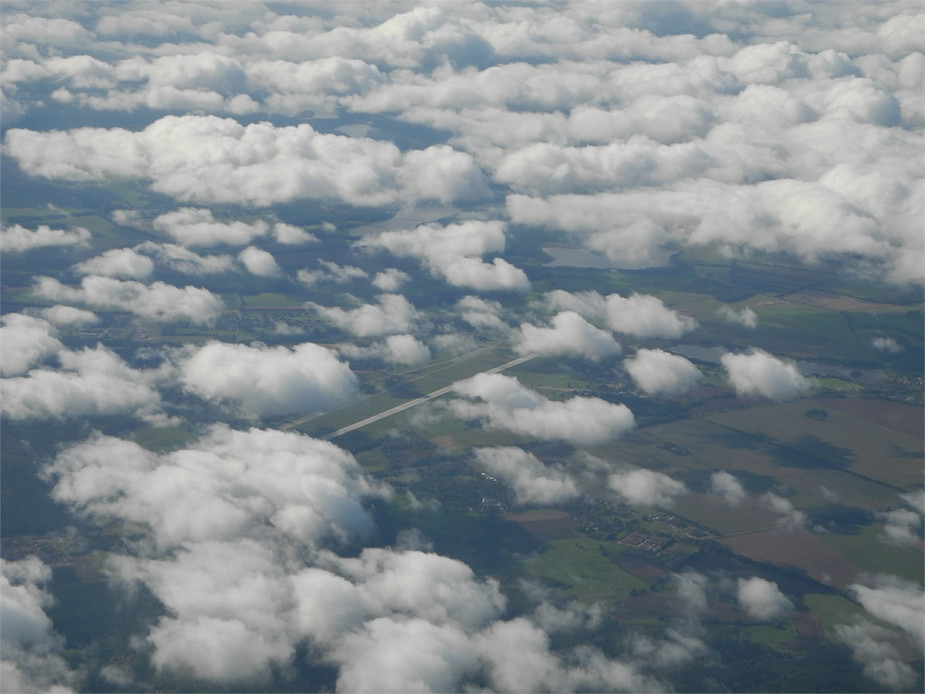
Here we are, in normal cruise mode (FL100, 170KTAS, 12.7GPH).
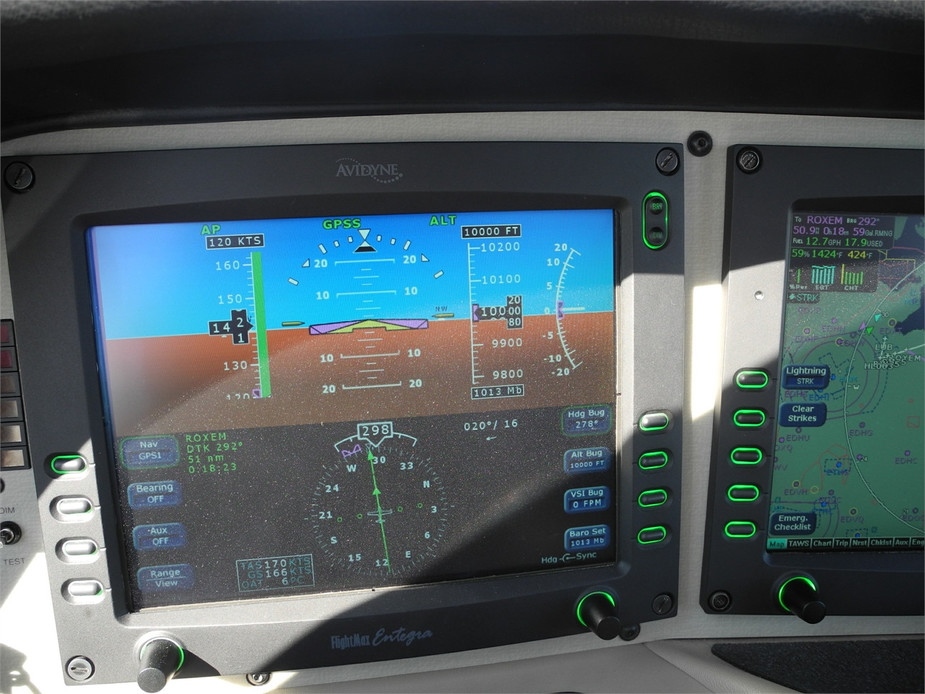
On short final for base, Luebeck (EDHL).
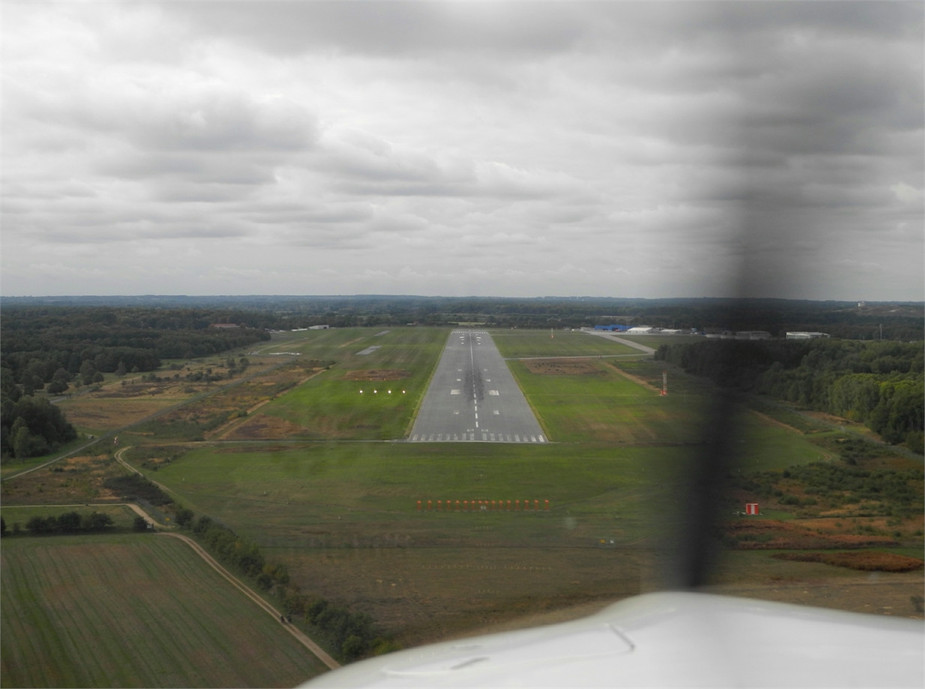
In total, only about 7.5 flight hours, but what a nice short trip it was!
Very interesting! Thank you for sharing
Nice report, maybe I need some TKS fluied for deice the aircraft at the ground.
UKLL coast mee two EM tickets, the price for landing and parking for one night growes every day. At the and we are around 800$ and no promise I would not be more in the end :-(
424F looks verry hot, what kind of problem it is?
Really wonderful photos, and no doubt a great trip for a going places plane... my feeling is 'so many places, so little time' :-)
Its sure a pity that GA can't be used to go to those places in Europe without so much formality, equipment and process. The distances are so small. Maybe in 100 years. At least its not impossible, as demonstrated here.
The Hapsburgs sure did get around.
It's not actually the probe, but the probe connectors that often go bad on the Cirrus. It's a poor design.
CHT indications on no. 1 are actually jumping around quite a bit, which speaks for an indication issue. GAMI spread is as even as always. Baffling and baffle seals have been checked and are normal. So definitely an indication issue only. All other CHTs indicate in the 300 F range in cruise.
Will get it fixed at the next 50 hours inspection.
I have had a few EGT probes go over the 11 years, but no CHT probes as yet. The EGT probes get simply eaten by the hot gases.
It is a characteristic of thermocouples that if you get a bad connection, the indication rises - until it fails totally open circuit and then the indicating instrument ought to flag a real error. However a bad connection should always appear intermittent, not steady.
In my Cirrus I'm flying currently with EGT#1 indicating around 700ºF. No intermittent indication, no zero, no higher readings. Engine sound/vibration/power normal. CHT, including cyl#1 are also OK. The wire that goes to the probe is damaged. Visually confirmed. Waiting for a new one to replace it.
Every Cirrus owner or regular flyer has flown anytime with a bad CHT or EGT indication due to the probes wiring. As Boscomantico has said it's a very common issue in these aircrafts. I've experienced the 'bad CHT' also.
Which bit of the wiring is it that fails?
A typical "JPI" type thermocouple probe is here
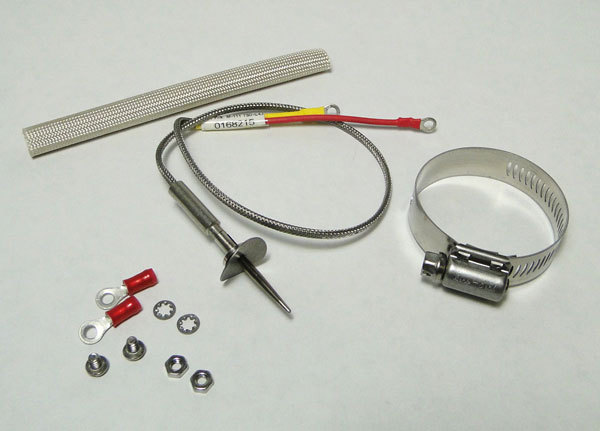
There should be just one joint in the entire cable run, which is the screw terminals visible in the above pic. If these are done with shakeproof washers (shown in the photo) they should not loosen.
The only other joint is at the instrument connector, which should be a good quality type with non-cheap crimped pins.
The rest of the cable should be a single length of thermocouple wire.
As I said above, my experience over 11 years is no CHT probe issues but several EGT probes lost.
If you get both CHT and EGT indications going bad on the same cylinder, that's the time to worry 
But even a bad EGT indication with a normal CHT indication could indicate a valve problem. The CHT value takes a bit of time to change.